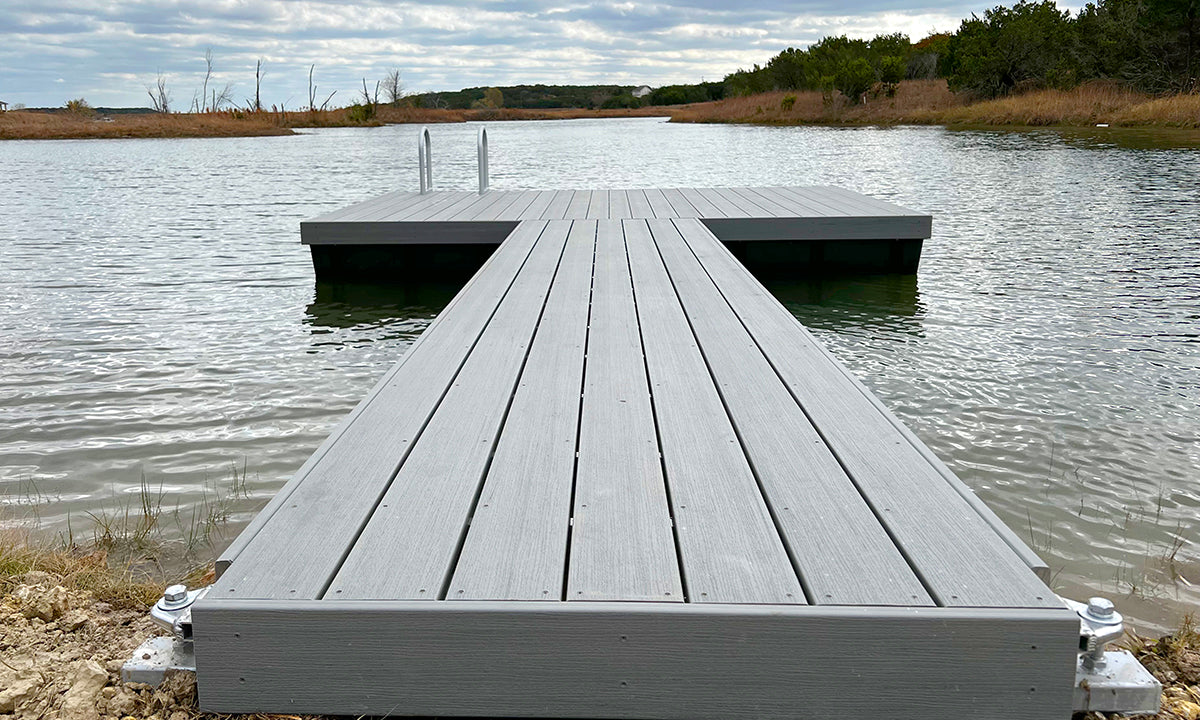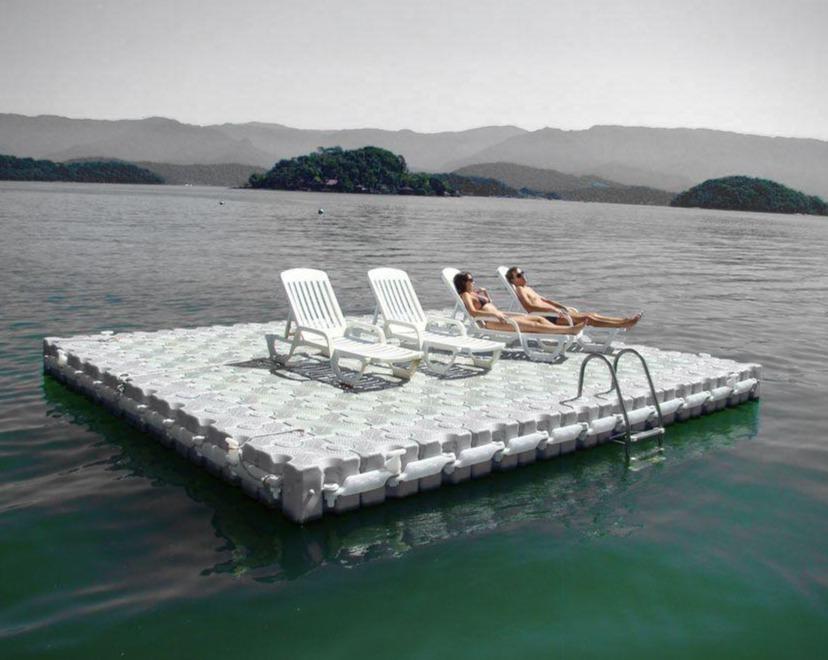Develop the Perfect Docking Remedy With Floating Docks
Floating docks existing a versatile remedy for a range of maritime requirements, adjusting effortlessly to fluctuating water levels and diverse vessel types. Their modular nature enables quick installment and moving, yet the choice of appropriate products and layout features is critical for ensuring both functionality and visual charm. As we discover the essential components that add to the effectiveness of floating docks, a number of essential factors concerning security and maintenance will emerge, raising concerns concerning how to optimize your docking experience. The subsequent conversation will certainly light up these essential factors to consider.

Benefits of Floating Docks
Floating docks offer countless benefits that make them an optimal choice for different maritime applications. Among the key benefits is their adaptability to changing water levels. Unlike repaired docks, floating docks fluctuate with the trend, making sure regular ease of access for vessels. This feature is specifically vital in locations vulnerable to significant tidal variations or seasonal water level changes.
Furthermore, floating docks are commonly easier and quicker to mount compared to traditional set structures. Their modular design enables straightforward setting up and disassembly, facilitating maintenance and relocation when required. This adaptability is especially advantageous for short-lived applications or in settings where problems might transform.
Floating docks additionally tend to be more environmentally friendly, as they minimize disruption to the seabed and surrounding water ecosystems. Their resilient nature decreases the risk of damage to aquatic life, promoting a healthier setting. These docks can be customized to fit different vessel dimensions, making certain that they meet particular functional needs.
Eventually, the combination of flexibility, simplicity of setup, and ecological factors to consider makes floating docks an extremely efficient option for a variety of maritime needs.
Selecting the Right Materials
Picking the suitable products for floating docks is essential to make certain security, longevity, and durability. The choice of products directly affects the dock's performance in various ecological problems, including exposure to water, sunshine, and possible wear from aquatic web traffic.
Usual materials used for floating docks consist of light weight aluminum, wood, and high-density polyethylene (HDPE) Aluminum is light-weight, corrosion-resistant, and requires minimal maintenance, making it an exceptional choice for durability. Its preliminary expense can be greater compared to other products.
Timber, while visually attractive and giving a typical appearance, can be susceptible to rot and bug damages if not properly treated. Consequently, utilizing pressure-treated wood or naturally sturdy types like cedar or redwood can mitigate these concerns.
HDPE is a preferred selection because of its resistance to UV rays and chemicals, along with being eco-friendly. dock company. It is lightweight and readily available in different colors, permitting personalization
Ultimately, the ideal product choice will certainly rely on particular needs, including budget plan, wanted visual appeals, and ecological considerations. Cautious examination of these factors will certainly lead to a effective and resilient floating dock solution.
Style Factors To Consider for Stability
When designing floating docks, making sure security is a basic aspect that can substantially influence their capability and safety and security. Stability in floating dock style is affected by numerous elements, including Related Site buoyancy, weight circulation, and the setup of parts.
Weight distribution is crucial; evenly dispersing lots throughout the dock avoids tilting and improves security. This can be attained via tactical positioning of docking tools, such as cleats and fenders, as well as proper spacing of floats. In addition, the measurements of the dock need to be attentively prepared. Larger designs can this page offer increased security, specifically in rough water conditions, while longer docks might need additional assistances to prevent drooping.
One more key factor to consider is the ecological impact, consisting of wave action and wind. Incorporating functions such as sidewalls or skirting can help minimize the impacts of environmental pressures, maintaining security in unfavorable problems. Ultimately, a mix of thoughtful design, product selection, and understanding of ecological elements will certainly yield a drifting dock that meets both security and safety demands.
Installation Tips and Methods

Following, protect the essential permits and comply with local guidelines, which may determine installment methods and environmental factors to consider. Involve a certified specialist experienced in floating dock setups if required. Usage top notch materials designed for aquatic environments to boost toughness and long life.
When placing the dock, straighten it parallel to the coastline to promote simple access. Make sure that the anchoring system is durable, employing concrete blocks or helical anchors to support the dock against wind and wave action. It's important to make up seasonal water degree changes, including possible ice motion in colder climates.
Throughout the installment, ascertain the dock's floatation and security before settling the anchoring. On a regular basis check the installment for any type of signs of wear or damage. By following these ideas and strategies, you can attain a safe and secure, practical, and aesthetically pleasing floating dock installation that meets your needs.
Upkeep and Care Guidelines
Maintaining and caring for floating docks is vital to imp source lengthening their life-span and ensuring secure usage. Regular inspections need to be performed to determine any type of indications of wear, damages, or marine development. Search for splits, loose fittings, or stained areas on the dock's surface, as these problems can compromise structural honesty.
Cleaning is vital. Use a stress washer to eliminate algae, barnacles, and debris, which can accumulate gradually. For persistent development, take into consideration environmentally friendly cleansing agents that won't harm marine life.
Furthermore, inspect the mooring lines and supports frequently to ensure they are secure and free from corrosion. Change any torn or harmed lines promptly to preserve stability.
During extreme weather condition, such as storms or freezing problems, take preventive measures. Safeguard the dock with additional mooring lines and, if viable, remove any kind of detachable components to protect against damage.
Verdict
In verdict, the implementation of floating docks provides a functional and reliable docking remedy appropriate for different maritime applications. Their flexibility to varying water levels, incorporated with a modular design, allows for easy modification and relocation. Picking ideal materials enhances both sturdiness and aesthetic appeal, while careful factor to consider of security makes certain safety and security and longevity. With proper installation and regular upkeep, floating docks can supply reliable and reliable docking experiences for a large range of vessels.
As we check out the crucial aspects that contribute to the effectiveness of floating docks, a number of vital elements regarding stability and maintenance will certainly arise, increasing inquiries concerning exactly how to maximize your docking experience. Unlike dealt with docks, floating docks rise and fall with the trend, guaranteeing constant access for vessels.When creating floating docks, guaranteeing security is a basic element that can considerably affect their performance and safety. Security in floating dock layout is influenced by numerous variables, including buoyancy, weight distribution, and the setup of components. Ultimately, a combination of thoughtful layout, product choice, and understanding of environmental aspects will produce a floating dock that fulfills both stability and security needs.